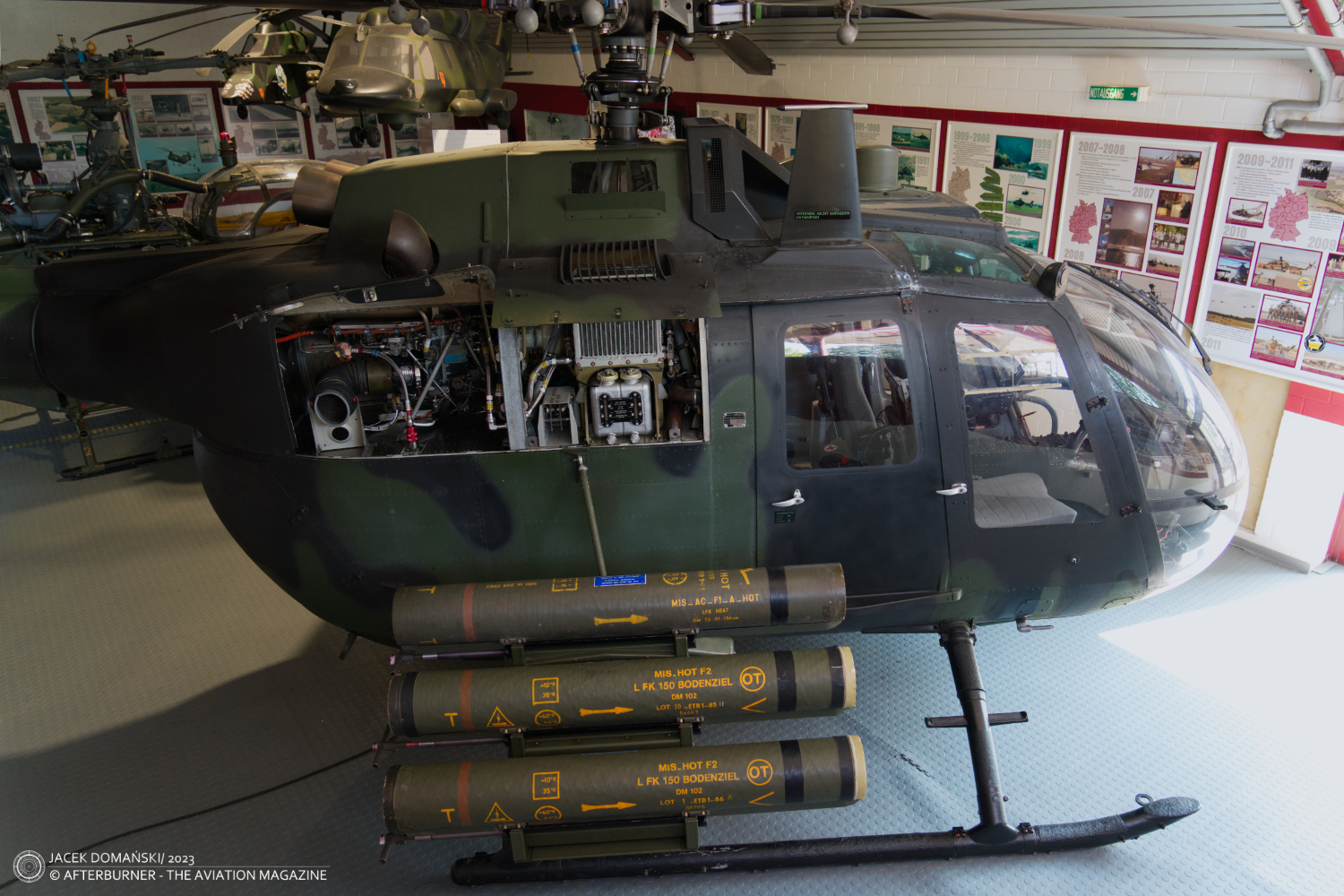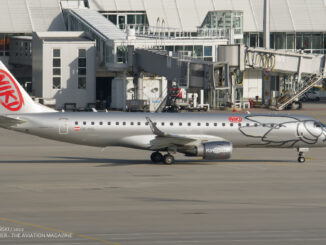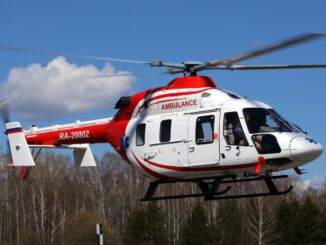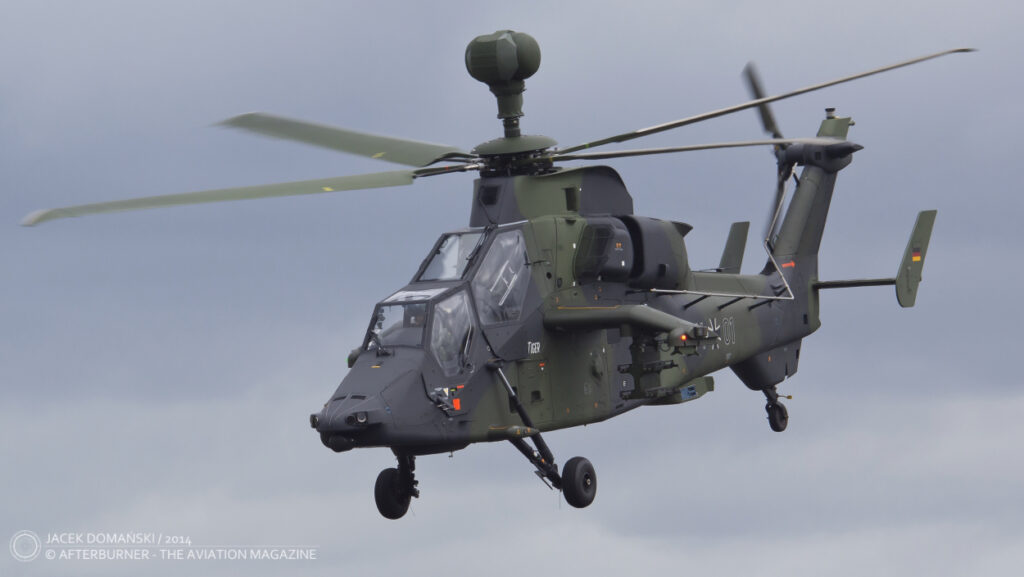 At the end of January 2024, the German Federal Ministry of Defence (Bundesministerium der Verteidigung) published the 18th issue of armament affairs report – 18. Bericht des Bundesministeriums der Verteidigung zu Rüstungsangelegenheiten. Between several aviation-related topics, an information about expected retirement of the EC665 Tiger fleet was included.
At the end of January 2024, the German Federal Ministry of Defence (Bundesministerium der Verteidigung) published the 18th issue of armament affairs report – 18. Bericht des Bundesministeriums der Verteidigung zu Rüstungsangelegenheiten. Between several aviation-related topics, an information about expected retirement of the EC665 Tiger fleet was included.
According to the abovementioned report, until the end of 2032, Kampfhubschrauber Tiger is going to be completely withdrawn from active service with the Bundeswehr. In addition, the current fleet of fifty-one EC665 attack helicopters will be limited to only thirty-three by 2028.
On 27th April 1991, the Eurocopter EC665 Tiger performed its maiden flight. Works on that helicopter were launched in the mid-1980s as a result of joint Franco-German programme for the new European anti-tank rotorcraft platform. The idea behind the EC665 initiative was to create an effective weapon, able to stop potential advance of the Soviet ground forces. However, several issues with its development, as well as political tensions, caused a significant delay and caused the Tiger was introduced into active service only in 2003, many years after the end of the Cold War.
French and German army aviation became two main operators of the EC665 attack helicopters. The German variant was designated Unterstützungshubschrauber Tiger – UHT (support helicopter Tiger) and made in sixty-eight examples. France ordered forty examples of Hélicoptère Appui Protection – HAP (close support helicopter) and another thirty-one of better armed and more powerful Hélicoptère Appui Destruction – HAD (support and destruction helicopter). In 2015, the decision was made to upgrade the HAP rotorcraft still in service to the HAD variant. Therefore, by 2025 the French Army Light Aviation (Aviation légère de l’armée de Terre – ALAT) is expected to operate sixty-seven Tiger helicopters in the unified HAD configuration.

In addition to two aforementioned countries, the EC665 Tiger was purchased by Spain (twenty-four examples in the HAD variant) and Australia (twenty-two helicopters designated Armed Reconnaissance Helicopter – ARH).
During over two decades of operational service, the Tiger helicopters were used in combat operation in Afghanistan, Libya and Mali. They also were a subject of a few upgrades and modifications. However, the EC665 service was the frequent subject of criticism, due to high cost per flying hour, expensive maintenance and complicated service that together led to low operational readiness ratio. In 2019, following the issues mentioned above, Australia decided to retire its Tiger fleet as soon as possible – the decision was made only three years after the Tiger ARHs achieved full operating capability status.
In the mid-2023, the first information about the planned retirement of the German Tiger fleet were announced officially. At that time, the deadline was planned for 2038. Nevertheless, it seems that since the beginning of this year, those plans gained new momentum.
In January of 2023, the Bundeswehr announced end of Franco-German cooperation on training of the Tiger crews in École franco-allemande de formation des équipages Tigre – EFA Tigre (the Franco-German school of Tiger crews), established in 2003. According to the German MoD, the last Tiger crews are supposed to graduate the EFA Tigre in 2028.
The earlier mentioned 18th issue of the armament affairs report moved the case even further. It confirmed the Bundeswehr was not going to upgrade its Tiger fleet to the new standard, currently being implemented by France and Spain, and designated Mark III. Instead, the German EC665 fleet will be retired from their duties five years earlier than expected, and the number of helicopters in active service will be soon significantly reduced.
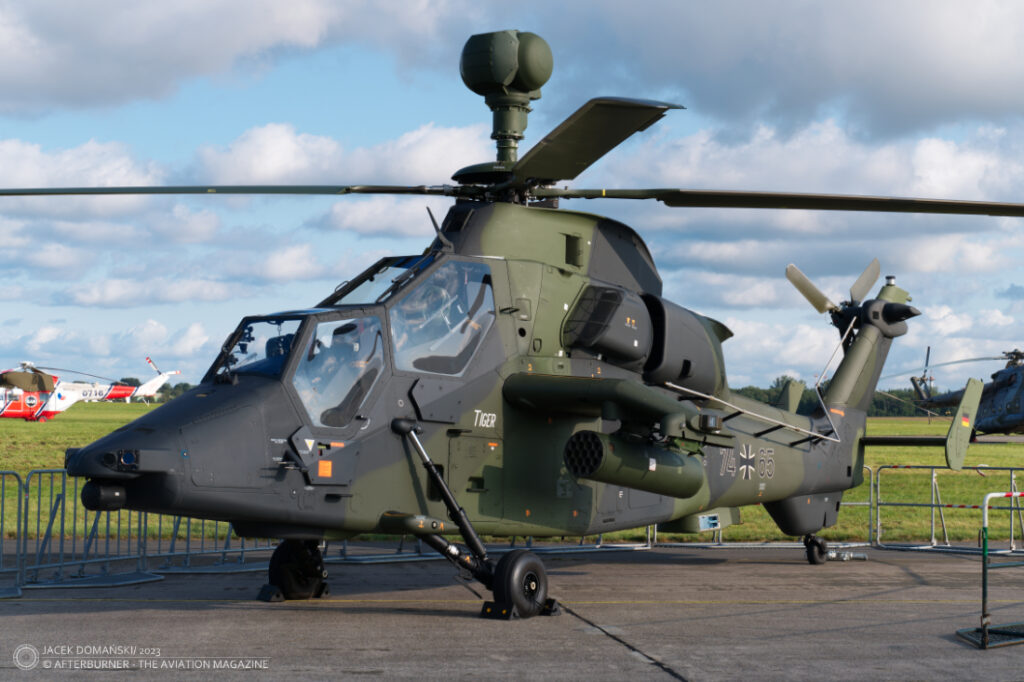
According to the abovementioned report, at least twenty-four of the German Tigers should be of the ASGARD (Afghanistan Stabilization German Army Rapid Deployment) special combat configuration, ordered by the German MoD back in 2011. The modernization includes additional defence equipment, sand filters, mission data recorder and enhanced communication equipment. As for October of 2023, thirteen German Tigers were already upgraded to the ASGARD standard, the document states.
Moreover, and according to the report, reduction of Tigers in active duty is aimed to achieve higher operational readiness ratio. Retired rotorcraft will be cannibalized and will be used as source of spare parts for the EC665 that remain on duty. In addition, the German MoD estimates that each helicopter would require approximately 4.5 million EUR to be spent per year to keep the Tiger fleet operational between 2023 and 2028.
Any potential replacement of the EC665 Tiger with new attack helicopter platform in the near future is very unlikely. However, as a temporary solution, Heeresfliegertruppe (army aviation corps) is going to receive up to eighty-two examples of Airbus H145M rotorcraft. Few of them will be delivered in leichte Kampfhubschrauber (light attack helicopter – LKH) configuration that also includes anti-tank missiles.
If the plans announced in the latest German armament affairs report comes true – the idea of purchase the H145M in LKH configuration has long been criticized by some military officials – it would mean return to the past. At the end of the 1970s, the Bundeswehr decided to acquire more than 200 of Panzerabwehrhubschrauber (anti-armour helicopters), based on Bo 105 rotorcraft and equipped with six HOT guided anti-tank missiles.
The Bo 105 PAH-1 was operational with the German army aviation corps until 2013. During its years of service, the helicopter was criticized for lacking any armour and being just a ´quick-made´ variant of a civil rotorcraft. What´s more, exactly similar conclusions drawn forty years ago from the Bo 105 PAH-1 service with Heeresfliegertruppe, led to create the specialized attack and anti-tank rotorcraft – the EC665 Tiger.
